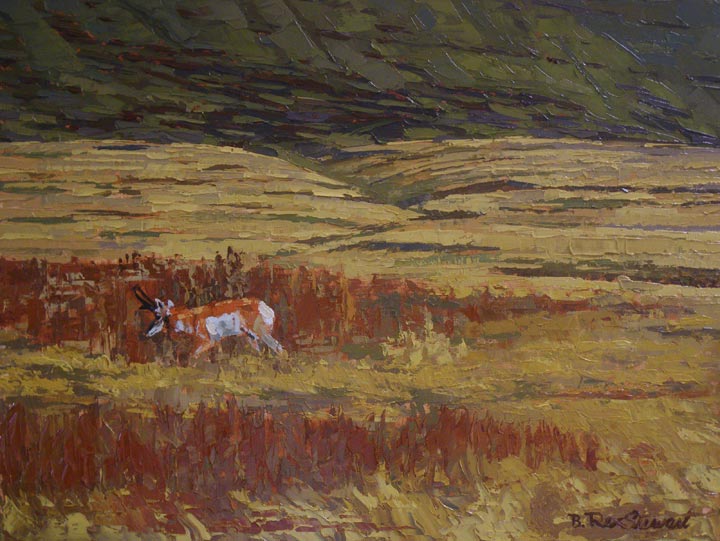I began this painting by looking at the overall color of the scene and choosing a tone that best fit the compliment of all the greens present. Using oil paints, I chose Burnt Umber and toned it down with a bit of Ultramarine Blue. I like to allow a considerable amount of the visible underpainting in the final outcome. However, I do not want the underpainting to advance too far forward which is why I tone it down with the appropriate color instead of using straight color, such as Alizarin Crimson.
Using this monochrome color and not adding white is an additive/subtractive process of underpainting. The canvas is first toned with a bit of odorless turpentine and paint. Then darks are added and the lights are subtracted by blotting up the paint with cloth, dry brush and at times a paper towel twisted to a point. I chose not to get too involved with detail on this scene that features the antelope as a secondary element to the landscape. I would save a detailed underpainting for a much larger canvas that features an animal as a more central element.
At this stage the paint is very thin and I could instantly begin slinging paint around but I usually like to let things simmer at this stage while I visualize how the colors will relate and how best to achieve harmony.
The finished painting painted primarily with pallet knives and a small amount of detail added by brush to the antelope.


